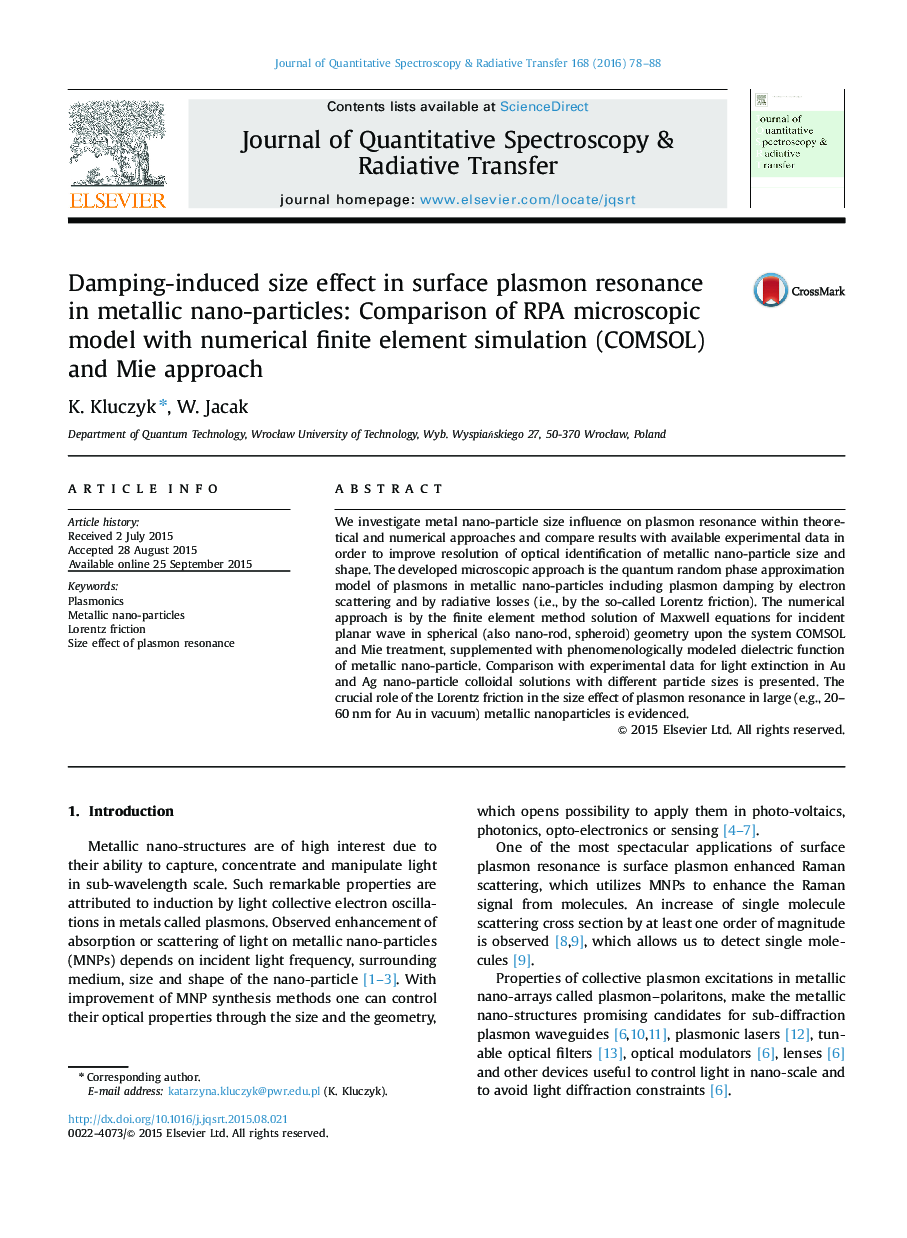| Article ID | Journal | Published Year | Pages | File Type |
|---|---|---|---|---|
| 5427804 | Journal of Quantitative Spectroscopy and Radiative Transfer | 2016 | 11 Pages |
â¢Surface plasmon resonance in metallic nano-spheres is studied upon microscopic RPA model.â¢Size effect in resonance is explained by damping due to scattering and Lorentz friction.â¢Lorentz friction of plasmon oscillations exhibits strong irregular size effect.â¢RPA model is compared with finite element simulations, Mie theory and experimental data.â¢Modeled dielectric function for Mie/COMSOL is corrected by Lorentz friction damping.
We investigate metal nano-particle size influence on plasmon resonance within theoretical and numerical approaches and compare results with available experimental data in order to improve resolution of optical identification of metallic nano-particle size and shape. The developed microscopic approach is the quantum random phase approximation model of plasmons in metallic nano-particles including plasmon damping by electron scattering and by radiative losses (i.e., by the so-called Lorentz friction). The numerical approach is by the finite element method solution of Maxwell equations for incident planar wave in spherical (also nano-rod, spheroid) geometry upon the system COMSOL and Mie treatment, supplemented with phenomenologically modeled dielectric function of metallic nano-particle. Comparison with experimental data for light extinction in Au and Ag nano-particle colloidal solutions with different particle sizes is presented. The crucial role of the Lorentz friction in the size effect of plasmon resonance in large (e.g., 20-60Â nm for Au in vacuum) metallic nanoparticles is evidenced.
